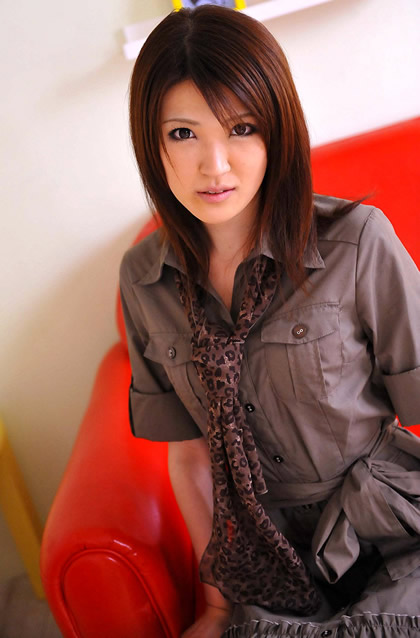 |
| Thomism |
The epithet “Thomist” has been applied since the four-teenth century to followers of St. Thomas Aquinas; the earlier “Thomatist,” occasionally used, was dropped toward the end of the fifteenth century. The term has a different implication according to the three main historical periods that can be distinguished.
First, until the beginning of the 1500s, during a period of vigorous Scholasticism and competition among several schools, Thomism stood in metaphysics for the doctrine of a composition of essence and existence in all created beings; and in noetics it opposed both nominalism and the Neoplatonic concept of illumination by the Ideas.
Second, from the sixteenth until the eighteenth century Thomism flourished in the golden age of Spanish Scholasticism. (At this time Thomists unreservedly applied to theology the metaphysical concept of the premotion of all secondary causes by the first cause.) Third, beginning about the middle of the nineteenth century there was a revival of Thomism that was authoritatively endorsed by the Catholic Church.
 |
| Thomas Aquinas |
Since then it has been claimed for Thomism that it represents the philosophia perennis of the West; Thomists have engaged in many-sided dialogue with thinkers from other traditions and disciplines and have been constructive in applying Thomistic principles to modern social and political problems.
We shall take these periods in order, noting before-hand that a unified philosophy, inspired by the writings of Thomas, persists throughout. In the philosophy of Thomas phenomenology is not divided from ontology; the world is real and composed of many real and distinct things, all deriving from one fount and all related by the analogy of being.
Man is a single substance composed of body and soul; his knowledge begins from experience of the material world, and his understanding is developed through reason; his free activity determines his personal and eternal destiny.
Thirteenth to Sixteenth Century
 |
| Thirteenth to Sixteenth Century |
When Thomas died in 1274, much of his teaching was still regarded as startling. Despite the affection in which he had been held (this was greater in the faculties of arts than in those of divinity) and despite his writings against the Latin Averroists, there developed a bitter opposition expressed in criticism and censure.
It came from the representatives of the traditional Augustinian theology and was reinforced by the Franciscan masters. Conservative, yet by no means obscurantist, they included Thomas in their suspicions of what can be simplified as the “this-worldliness” of the new Aristotelianism.
Étienne Tempier, bishop of Paris, was commissioned by Pope John XXII (Peter of Spain, the famous logician, who was an able natural philosopher) to investigate the charges against the new philosophy; he exceeded his instructions and in 1277, in a scissors-and-paste syllabus, he condemned 219 propositions, about a dozen of which can be traced to Thomas.
 |
| Étienne Tempier |
In the same year Robert Kilwardby, the exprovincial of the English Dominicans and now the archbishop of Canterbury, forbade the teaching of Thomas at Oxford, and his successor, John Peckham, acridly continued the same policy; they led the group called the Cantuarienses.
As is evidenced in William de La Mare’s list of correctives (correctoria) issued to be appended to Thomas’s writings, many of the points at issue were highly technical, and some of them may now seem even trivial; the debate, much of which Thomas himself anticipated in his Quaestiones Quodlibetales, revolves round what to him were contrasts—but to his critics were conflicts—between nature and grace, reason and faith, determinism and freedom, the existence of the universe from eternity and its beginning in time, the soul as biological form and as spirit, and the role of the senses and of divine enlightenment in the acquisition of knowledge.
Although the censures had no force outside Paris and Oxford and the criticisms were more moderate in substance than they were in tone (they judged Thomas to be dangerous rather than heretical), his fellow Dominicans were quick to rally to his defense, to get the condemnations reversed and to correct the corrections, which they called corruptions.
 |
| Albert the Great |
Thomas’s old master, Albert the Great, so much the leader of the new movement that it has been called Albertino-Thomism, interposed at Paris; Pierre of Conflans, archbishop of Corinth, and Giles of Lessines remonstrated with Kilwardby; and Richard Clapwell, prior of Blackfriars, Oxford, progressively adopted Thomas’s positions and stoutly maintained them against Peckham. The school was strengthened by a brilliant group of English and French Dominicans, and it was adopted by the Dominican order at successive general chapters.
It could always count on support from the Roman Curia, which was favorably inclined toward Greek philosophy. The Ecumenical Council of Vienne (1311–1312) endorsed man’s psychophysical unity, and in 1323 John XXII canonized Thomas and solemnly commended his doctrine. Henceforth he was a received authority.
Among the Thomists of these first fifty years John of Paris and Thomas Sutton were outstanding; other noteworthy teachers were Raymond Martin, a contemporary of Thomas who worked on the frontiers of Arabic science, William of Macclesfield, William of Hothun (archbishop of Dublin), Thomas Joyce (Jorz), Robert of Orford, Rambert of Bologna, Bernard de la Treille (Bernard of Trilia), Hervé de Nedellec, Nicholas Trivet, James of Lausanne, Ptolemy of Lucca, Peter de la Palu, James of Metz (uneasily attached to the school), and Remigio de Girolami, the master of Dante Alighieri.
 |
| Thomas Sutton |
In their hands the distinctions between essence and existence, matter and form, and substance and accident became sharper, although some of these scholars were reluctant to go beyond Aristotle to support, as Thomas did, the concept of an act of a form.
Of particular interest is a German group deriving more directly from Albert than from Thomas and imbued with strains of Neoplatonism from Proclus and Avicenna; within this group were Ulrich of Strasbourg, Dietrich of Vrieberg (Freiburg), Berchtold of Mosburg, and, most famous of all, Meister Eckhart, whose Thomism is not generally considered to have been unequivocal. All these men were Dominicans; the secular master Peter of Auvergne and the Augustinian friars Giles of Rome and James of Viterbo can also be ranged with them.
As the later Middle Ages drew on, the enterprise of integrating a wide-ranging philosophy in theology was succeeded by more piecemeal investigations, and the schools settled down to their own party lines with a sharpened logic but some loss of originality.
 |
| Meister Eckhart |
In the rivalry between the Dominicans and the Franciscans, Thomism was matched against Scotism, and this set the tone of its development: In fact, however, as Dominic de Soto later acknowledged, the agreements between the two were more important than their differences.
Moderate realism was represented at all the universities and adhered to at Louvain, at Cologne, and later at Heidelberg. Thomism itself must be reckoned a minority movement, and some prominent Dominicans did not belong to the school.
Durandus of Saint-Pourçain steadily ran counter to Thomas’s teaching, and the Cambridge Dominican Robert Holkot did not fall in with it. A central figure is John Capreolus, called the Princeps Thomistarum, whose writings are a mine of information on the disputes with Scotists and Ockhamists.
 |
| John Capreolus |
Although Capreolus chose Thomas’s “Commentary on the Sentences” for his expositions rather than the better organized Summa Theologiae, he, together with Serafino Capponi de Porrecta, bequeathed to their order the habit of systematically articulating the whole corpus of Thomas’s teaching.
Less confined to the classroom and closer to life and the historical movement of ideas was St. Antoninus, archbishop of Florence, the moralist who is a major authority for medieval economics.
The influence of the Renaissance was already beginning to make itself felt, and the first period of Thomism closed nobly in north Italy with Bartholomew of Spina, Crisostomo Javelli, Francis Sylvester (or Ferrariensis), and Thomas de Vio (or Cajetan). The last two, the classical commentators on the Summa contra Gentiles and the Summa Theologiae, respectively, were friends and opponents, particularly on the metaphysics of analogy.
 |
| Crisostomo Javelli |
Both were responsive to the renewed vitality of Latin Averroism, and for them the unity of their school lay more in an inner consistency of approach than in a common subscription to a list of propositions, such as marked later Scholasticism when it had retreated or been banished from the profane world into the ecclesiastical academies.
Cajetan, the master of a nervous style that fitted the subtle analysis at which he excelled, was a good scholar and a man of affairs. His standing in the school is second only to that of Thomas himself, although there is some question whether he was not a better Aristotelian than a Thomist.
It is alleged that his emphasis on existence as the act of substance rather than on esse as the act of being may have encouraged the habit of discussing essences apart from existence, which was treated as a predicate.
Sixteenth to Nineteenth Century
 |
| Sixteenth to Nineteenth Century |
The second period, coterminous with the golden age of Spain, also had its origins in Burgundy and also declined through an inability to adjust to an expanding world outside its frontiers.
In the fifteenth century Dominic of Flanders developed Thomas’s exposition of the Metaphysics, and Peter Crockaert of Brussels, the master of Francisco de Vitoria (the father of international law), was the first of a great line of masters associated with the University of Salamanca. It was the faculty of this university that intervened with the Spanish government to humanize colonial policy.
They forsook the crabbed angularities of fifteenth-century Scholasticism for a more flowing baroque style; at the same time, however, they found what they regarded as the formal logic of Aristotle to be a sufficient instrument for their debates, and the advances made on it (the subtilitates anglicanae) were neglected.
 |
| Francisco de Vitoria |
Although they are chiefly famous as Tridentine divines, the theological questions that they considered—the relations of efficacious grace and free will, of authority and conscience—occasioned sustained philosophical discussion.
Among these sixteenth-century authors, the following are well worth study: Melchior Cano for scientific method and Bartholomew de Medina, Dominic de Soto, and Martin de Ledesma for moral theory. Dominic Báñez is much admired for his high Thomism in metaphysics and natural theology.
These were Dominicans, but the best-known writer of the group is the Jesuit Francisco Suárez, who is impressive by virtue of the breadth of his interests and the organization of his voluminous writings, although strict Thomists would reckon him an eclectic and would think that he achieved his clarity by too concrete a habit of thought.
 |
| Tridentine divines |
The Jesuits were at this time taking the lead in higher education, and of all the orders they were the most aware of contemporary scientific research. Courses of philosophy began to be given apart from theology, and the teamwork of the Jesuits at Coimbra produced the volumes titled Conimbicenses (1592), and of the Carmelites at Alcalá de Henares those titled Complutenses (1624).
In twentieth-century Thomistic studies John of St. Thomas perhaps became more influential than Cajetan, and his Cursus Philosophicus, digested in Josef Gredt’s Elementa Philosophica, may be recommended as of lasting value.
Yet by the end of the seventeenth century Thomism was important only in the centers of ecclesiastical learning; it was part of the establishment, more honored, perhaps, than listened to. Its monument is the Casanata Library in Rome, founded with two chairs of Thomist exegesis.
 |
| Gottfried Wilhelm Leibniz |
Its philosophy served mainly as a prolegomenon to theological studies and was conducted in the “essentialist” temper of Gottfried Wilhelm Leibniz and Christian Wolff. In this spirit Antoine Goudin wrote his significantly titled Philosophia Juxta D. Thomae Dogmata (Milan, 1676), which by 1744 had gone through fourteen editions.
Salvatore Roselli’s six-volume Summa Philosophiae (Rome, 1777) was written in response to the reiteration of the Dominican commitment to Thomas’s doctrine made by the master general, John Thomas Boxadors.
Both works influenced the revival of Thomism in the next century. But few Thomists took part in the dialogue of philosophers from René Descartes to G. W. F. Hegel, and the writings of the school were studied only by those with antiquarian tastes or a special interest in the history of philosophy.
Nineteenth and Twentieth Centuries
 |
| Nineteenth and Twentieth Centuries |
The situation began to change about the middle of the nineteenth century. A circle of teachers at Piacenza, Naples, and Rome who were dissatisfied with the eclectic doctrines that then served for clerical studies and were critical of the developed Kantianism of Georg Hermes, the accommodated Hegelianism of Anton Günther, the antirationalism of traditionalism, and the ontologism of Antonio Rosmini began to look to the synthesis of Thomas.
The Dominicans themselves had remained faithful to Thomas, but their temper was somewhat rabbinical and concentrated on the letter of the text; and except in Spain and southern Poland they had been scattered in the troubled times after the French Revolution. At the beginning of the nineteenth century a secular canon,Vincenzo Buzzetti, inspired two brothers, Serafino and Domenico Sordi, who later became Jesuits, and Giuseppe Pecci, the brother of the future Leo XIII, to the work of the restoration of Thomism.
They were joined by Gaetano Sanseverino, who contributed the five-volume Philosophia Christiana (Naples, 1853), and were supported by the influential Jesuit periodical Civiltá cattolica.
 |
| Gaetano Sanseverino |
The movement gathered strength with the affirmation of the rights of reason at the First Vatican Council (1869–1870) and with the teaching of two great professors at the Gregorian University, Matteo Liberatore and Josef Kleutgen, and of two Dominican cardinals, the Corsican Thomas Zigliara and the Spaniard Zefirín Gonzales. Finally, Leo Kill’s encyclical Aeterni Patris (1879) sounded the recall to Thomas’s basic doctrines in order to meet modern needs.
Succeeding popes have reinforced this recommendation, not without embarrassment to those not wedded to Thomas’s system, and even to those Thomists who would not have philosophy inculcated according to administrative needs.
In practice, however, and despite the scares of the Modernist movement and the antimetaphysical temper since the 1940s, the injunctions have not proved irksome; and many forward-looking thinkers have discovered that Thomas was a benign and generous patron of their studies.
 |
| Corsican Thomas Zigliara |
A history of neo-Thomism—the title is not relished by many in the school who do not see themselves committed to an absolute system—remains to be written. One characteristic of neo-Thomism has been its willingness to assimilate influence from outside its own tradition, which is a tribute to the depth and versatility of its principles.
Another is that it has not been preoccupied with ecclesiastical matters; it inspired the social teaching of Leo XIII, with the result that many laypeople and statesmen have consulted it in developing the ideals and practice of Christian democracy.
Nor has the conduct of speculation been reserved to clerics, and in the mid-twentieth century Thomism had no names more eminent than those of Jacques Maritain and Étienne Gilson. Although it appeals primarily to Catholics, its adherents are not necessarily Catholics, or even Christians. It presents no fixed image of conformity.
 |
| Jacques Maritain |
The Spanish works of high Thomism (the names of Norberto del Prado and Jaime Ramírez may be mentioned) have seemed to stand apart from the streams of contemporary thought, and the chief agencies that have taken Thomism into the world debate have been the University of Louvain and the French Dominicans.
The Institut Supérieur at Louvain was founded in 1889 by Désiré Mercier, later cardinal, to bridge the gap between modern science and philosophy, particularly with respect to the problem of knowledge. In connection with this effort, the work of Joseph Maréchal was noteworthy.
The French Dominicans have made contributions important both in critical research and in the popularization of Thomistic philosophy, and they have been alert to consider the most seemingly disparate interests; their periodicals, the Revue des sciences philosophiques et théologiques and the Revue thomiste, provide probably the best index to the activities of the school.
 |
| Désiré Mercier |
From the universities of Munich and Münster has come important work, and the names of Martin Grabmann and Otto Geyer are illustrious. Other outstanding figures are Réginald Garrigou-Lagrange of the University of St. Thomas in Rome and R.Welty and I.M. Bochenski of the University of Fribourg.
A strong stream of Thomism is evident in the work of A. E. Taylor at Edinburgh, Kenneth Kirke at Oxford, E. L.Mascall at London, and Mortimer Adler at Chicago. Distinguished work comes from the Medieval Institute in Toronto, and there are flourishing centers of Thomistic study in Washington, D.C.; River Forest, Illinois; St. Louis; Montreal; and Sydney.
The enumeration, however, is incomplete and perhaps invidious. The bibliographies of the Bulletin thomiste bear witness to a worldwide interest in Thomistic thought on the part of both philosophers and theologians.
 |
| Kenneth Kirke |